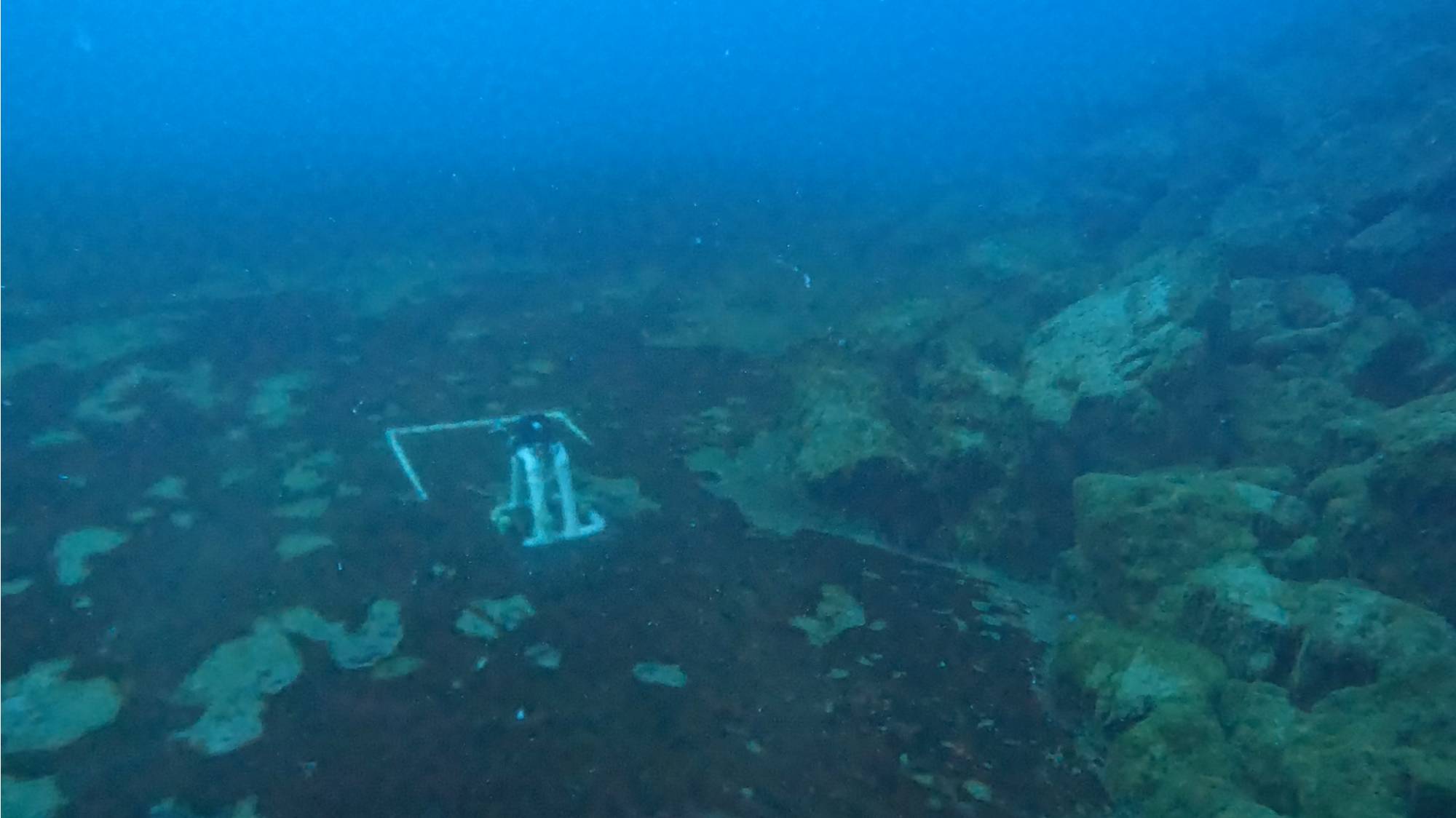Connections for the STEM Classroom
The 1 mm Journey: Daily Microbial Movement that Possibly Shaped the Early Biosphere
By Bopi Biddanda, Tony Weinke, and Ian Stone, Annis Water Resources Institute, Grand Valley State University
Newly published research with modern-day microbial mats catches in the act the tiny but daily vertical migration of microbes in response to changing light and chemicals in the environment. In what might have been the largest daily mass migration of life for the first 3.5 billion years of life when the biosphere was a thin Mat World, these daily movements may have optimized photosynthesis and carbon burial – oxygenating our biosphere.
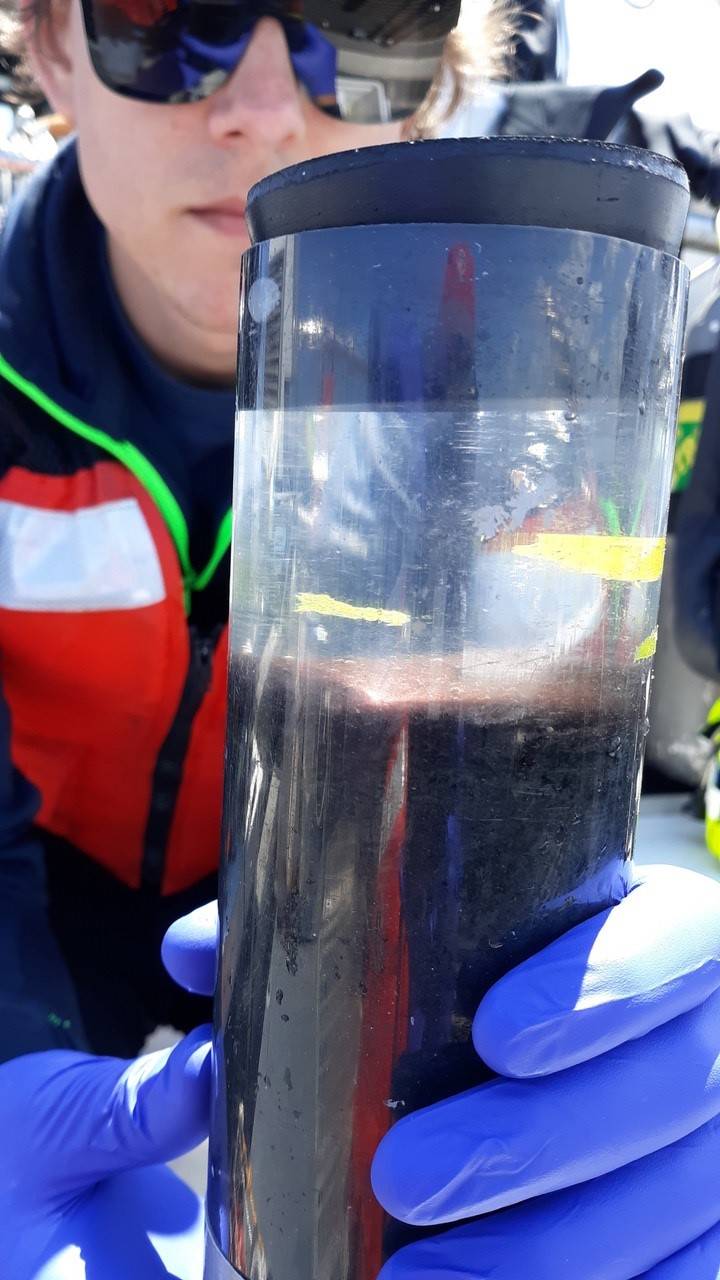
Research technician, AnthonyWeinke examining a sediment core with intact mat on top that divers just retrieved from the sinkhole on board NOAA’s R/V Storm
Imagine you could enter a time portal and see what life was like ~3 billion years ago in the oxygenless sulfurous ocean when much of the biosphere was a thin film of life on the bottom of shallow seas. Well, luckily for us, time, water and geology have indeed conspired to create modern-day underwater sinkholes in the Laurentian Great Lakes basin where venting oxygen-poor and sulfur-rich groundwater fuels mat worlds that resemble life in early Earth’s shallow seas and deep-sea vents. Here, groundwater percolating through ~400-million-year-old marine evaporites (salts left over by the seas that once covered the basin) in limestone aquifers gains sulfates (and density) and loses oxygen as it vents underneath Lake Huron – creating fascinating modern-day underwater ecosystems that resemble where some of life’s most enduring questions may be addressed.
Life in Lake Huron’s sinkholes features a textbook redox tower extending from the oxygenated mat surface down to the oxygen-less sulfide-rich sediments. Here, photosynthesis is closely balanced by respiration with some net oxygen production occurring late in the day – tiny amounts that were perhaps enough to oxygenate the environment over the eons. Furthermore, sinkholes are carbon sinks where the daily vertical migrations of mat microbes facilitate the burial and preservation of settling organic matter in underlying sediments. Such activity amplifies the “biological pump”, the phenomenon where atmospheric carbon dioxide is biologically gathered at the surface by photosynthesis and a portion is sequestered through burial in the underlying sediments. Thus, the daily lifestyle of sinkhole microbes offers many clues to how life on the early biosphere might have functioned.
Earlier studies by divers during different times of the day suggested that the mat may be shifting in color from purple during the day to white during the night, though this notion was never tested. To test this idea, we deployed a time-lapse camera system at the sinkhole bottom to obtain high-frequency images of the mat over the day-night cycle during 2018-2021. We were astounded by the finding that mere micrometer-sized mat microbes could engage in vertical mass movements of millimeters over the course of hours – completely changing the appearance of the matscape and enabling optimal harvesting of light and chemicals that prevail during different times of the day-night cycle. A recent article in the Journal of Great Lakes Research entitled “Tango in the Mat World” vividly showcases these findings: a chronologized account of the diel vertical migration of sinkhole microbes, description of the light-chemical cues that may underly such daily mass movement, and discussion of the planetary level implications of their tiny but daily 1mm journeys.
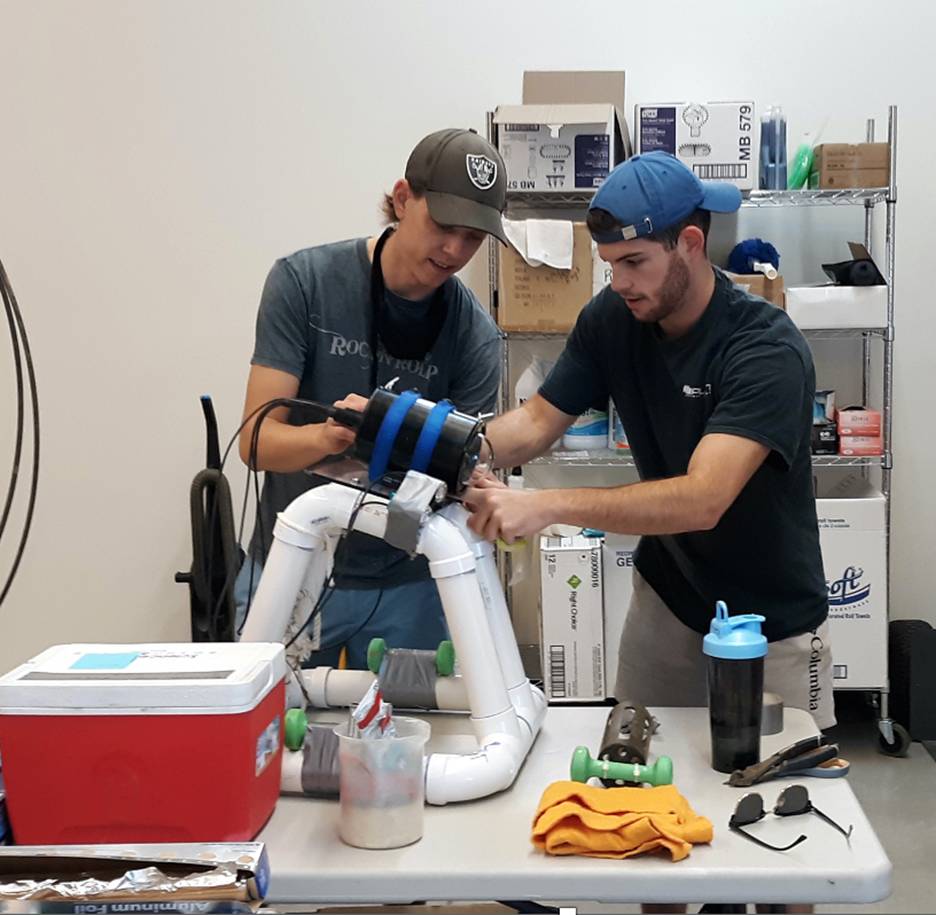
GVSU research technician, Anthony Weinke and undergraduate student, Ian Stone assemble and mount an underwater imaging time-lapse camera prior to deployment on the sinkhole floor for tracking macro-scale vertical microbial migration
Diver video captures the underwater time-lapse camera in action (placed in front of a 1m2 PVC frame for scale) over the microbial mat at the bottom of Middle Island Sinkhole (a modern-day mat world), Lake Huron at ~23 m depth in June 2022
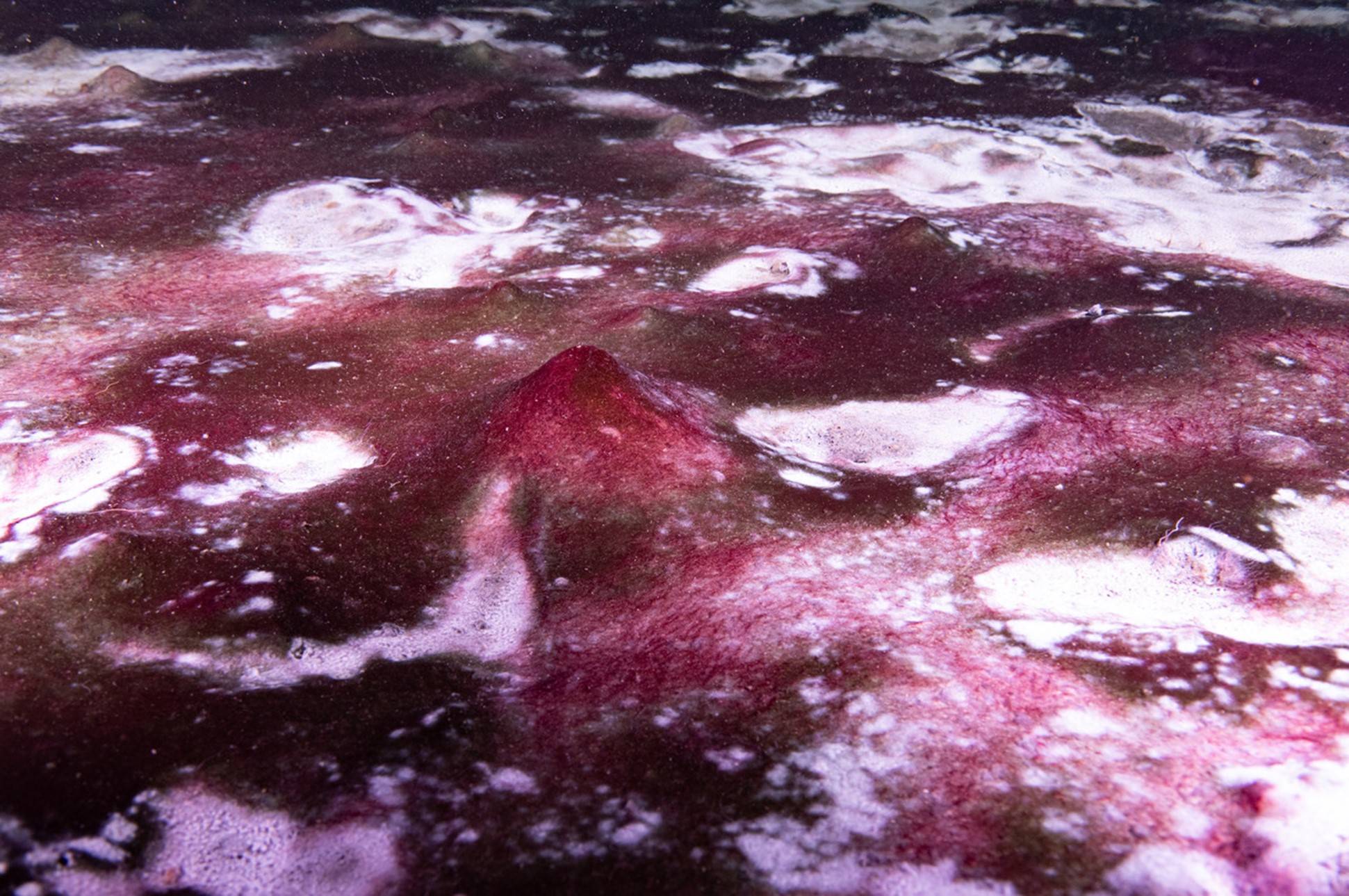
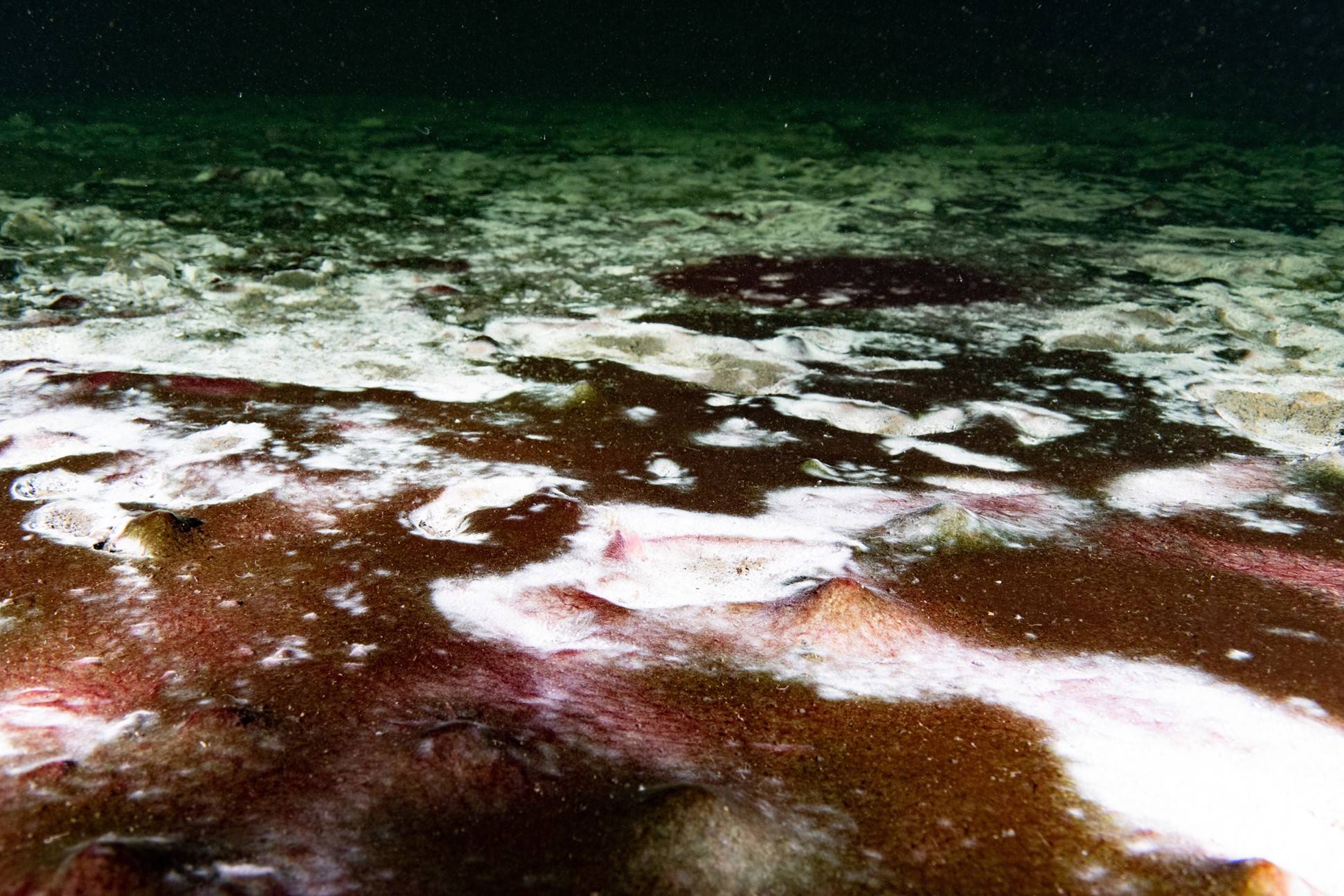
Dynamic modern-day mats that prevailed during the long Precambrian may have oxygenated our planet: A July 2021 underwater image showing the predominantly purple late afternoon lakescape, and predominantly white early night lakescape. respectively, in the bottom of Middle Island Sinkhole in Lake Huron at ~23m depth (Photo credit: Phil Hartmeyer, NOAA-Thunder Bay National Marine Sanctuary). Here, the mat world composed of photosynthetic cyanobacteria (purple) and chemosynthetic microbes (white) alternatively migrate to the surface during day and night, respectively.
The paper’s summary reads:
Today, benthic microbial mats covering submerged sinkhole ecosystems of Lake Huron exhibit rapid motility of photosynthetic and chemosynthetic filaments in response to daily environmental variations. Motility in sync with changing light and redox may play a critical role in mat formation and dynamics, photosynthesis and chemosynthesis, sedimentary carbon accrual, and net oxygen evolution in mat ecosystems. Thus, these motility-related findings have important implications for advancing our understanding of not only the ecophysiology and biogeochemistry of modern-day microbial mats, but also the evolution of early Earth’s ocean and atmosphere as influenced by analogous microbial mat communities in the Precambrian seas (~4.0 to 0.4 Billion years ago).
Our study also suggests promising leads for future investigations into the everyday life of modern-day mats to assess their emergent ecosystem level roles. These include new insights into how dynamic the early biosphere might have been leading up to the oxygenation of the planet, the significance of modern-day mat ecosystems to Earth’s current biodiversity and physiologic potential, and ideas about what a return to a future mat world scenario may be like, a scenario not implausible since many geobiological phenomena cycle and recycle again. Additionally, Earthly mats, such as those in the submerged sinkholes of Lake Huron that are suitable for deploying human divers and remotely operated/autonomous observing vehicles, may serve as useful working models in our ongoing search for life on extraterrestrial planets with hydrospheres.
Microbes obtain and use information from their microenvironment to meet the challenges of everyday life, and microbes responding to microenvironmental gradients in their habitats are the engines that drive the cycling of major bioactive elements on Earth. Over their long geobiologic history, microbes have evolved ecologically advantageous features such as motility that allow them to survive and succeed in sharply varying light and redox environments such as mat, soil and sediment ecosystems in which they often occur in abundance. In this context, the challenge will be to comprehend the daily “biogeochemical tango” taking place in Earth’s extant mat microbiomes, and determine its significance to the biosphere’s past, present and future. Such know-how will be increasingly critical in an Earth undergoing rapid environmental change.
For short time-lapse of the daily tango in the microbial mat world, see videos hosted under the Open Science Framework – https://osf.io/qgf68/ and https://osf.io/ftnye/
Published peer-reviewed source literature with open access:
Biddanda, B., A. Weinke, and I. Stone. (2022/2023). Extant mat world microbes synchronize migration to a diel tempo. Journal of Great Lakes Research.
Open Access link: https://doi.org/10.1016/j.jglr.2022.10.006


